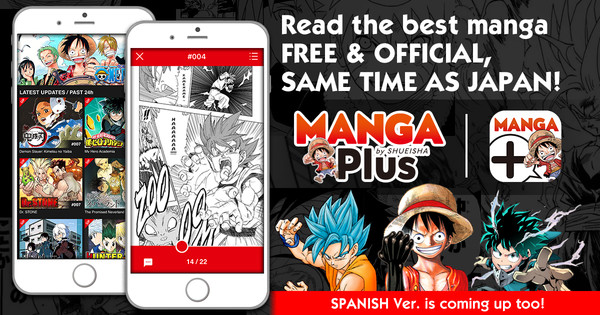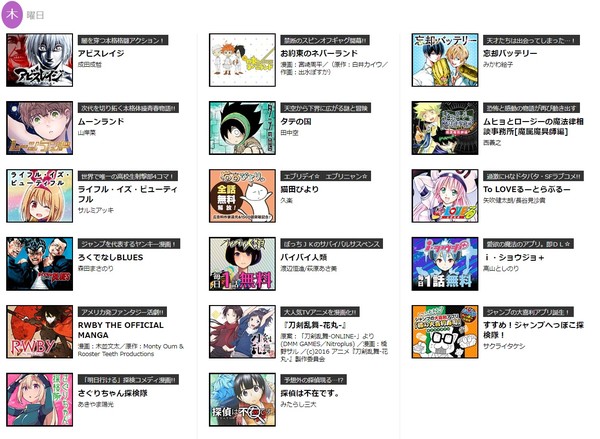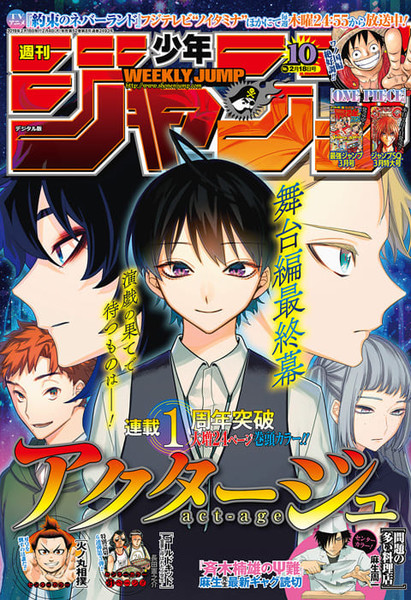Weekly Shonen Jump Editor-in-Chief Hiroyuki Nakano
by Kim Morrissy,Have you ever wondered what it's like to be an editor for Weekly Shonen Jump? Like a lot of manga fans, I've read Bakuman and was touched at how the editor Hattori was like a mentor to Ashirogi Muto from the time they were in middle school. But how true is that depiction to real life and what else do Jump's editors do? Hiroyuki Nakano, who has been editor-in-chief of Weekly Shonen Jump since 2017, generously took the time to explain to me the ins-and-outs of Weekly Shonen Jump and how the job has been changing over time.

What manga have you liked since you were a child?
HIROYUKI NAKANO: Well, I've always liked Doraemon. When I was in elementary school and started reading Weekly Shonen Jump, I liked Kinnikuman and Captain Tsubasa.
When did you first become an editor?
Like the current Shonen Jump+ editor Mr. Hosono, I joined Shueisha around the year 2000, and from there I entered Shonen Jump.
Are you involved with MANGA Plus?
Well, Jump+ and MANGA Plus are both parts of Shonen Jump, and as the chief editor I get involved in the content of both the magazine and Jump+/MANGA Plus. I help decide what manga get serialized in both Jump+ and the magazine.
MANGA Plus is a free app that allows users around the world to read Jump manga at the same time as Japan. For more information about MANGA Plus, please read this article.

Can you explain what daily life is like as an editor?
Well, there are around 20 manga being serialized in Weekly Shonen Jump. Each editor has one or two manga and an artist they're handling. They have meetings with the artist and collect the manuscript every week. They're the people who take responsibility for delivering the manga to the reader.
Because it's a weekly schedule, it's tough to keep up with the deadlines, and there are a lot of manga artists who don't manage it. Always. (laughs) So the editor has to follow up with them. Sometimes, they collect the manuscript late at night. It's the kind of stressful job where you chase down people who don't meet deadlines and make them draw.
It's not always a great feeling because without the artist there wouldn't be a manga in the first place. There are times where we just pray to god for the manga to be completed.
Is there one meeting per week? Two meetings?
It depends on the manga. When things are going smoothly, there's a meeting after a chapter is submitted. The editor discusses with the artist what should happen next. The artist submits the name - their draft - and the editor checks over it and gives feedback. I suppose in most cases it ends up being around two meetings a week, but when an artist is having trouble working out what to do next, they may call their editor a number of times a week.
I always wondered how accurate the Bakuman manga is to reality.
Well, it's fiction, so some things are exaggerated for dramatic purposes. But it takes a lot of details from real life, so I think it's quite close. For example, the backgrounds are drawn from photos taken of real-life locations. The scenes where an editor talks to a young artist are very true to life.

How do you decide which titles get adapted into anime?
We at Shueisha can't make anime ourselves, so there are a number of ways in which manga become anime. Sometimes, a manga is popular and we want to broaden its appeal by turning it into an anime, so we go around to various companies asking if they will adapt it as a way of promoting the series. Other times, other companies may reach out to us and ask if they can adapt the manga. Either way, if there is a desire for an anime, we at Shueisha will sponsor it.
Lately, it seems that late-night anime studios like Bones and Cloverworks have been getting involved in making Jump adaptations. You're still continuing your relationship with Pierrot and Toei, so why are late-night anime studios also getting involved?
At Shueisha, we have discussions about which manga would best suit which studios. Some studios reach out to us asking to adapt a particular manga, and we have turned them some of them down before. We decide it case by case.
But it's true that Jump is involved with a lot of companies, and we've changed as the years have gone by. It's also true that the landscape has changed a lot as well. These days, it's no longer as feasible for anime to keep running for years, while on the other hand it's more common to create a shorter-length anime to air late at night. There's also the matter of online streaming and split cours.
Because anime broadcasting has changed so much, those are factors that we consider when deciding which manga to adapt and on what terms. I think that's the reason why we've become involved with more anime companies than we used to.
So what was the case with My Hero Academia?
In My Hero Academia's case, it was the anime side that wanted to do it. We decided that Bones would make an incredible version of My Hero Academia, so we went with them.

Then there's The Promised Neverland, which is handled by Cloverworks.
That was the same thing. In the beginning, Fuji TV (which owns the Noitamina slot) reached out to us with the request to make an anime out of The Promised Neverland. The fact that Cloverworks would be the studio involved was part of that same deal.
Why did it become a late-night anime? Because of the content?
Yes, that was a factor. It has some frightening themes. Also, to express those themes, they need detailed animation, and for that the animation team needs time. Late-night anime has a longer schedule, so we gave them that.
On the other hand, Boruto and Black Clover are handled by Pierrot. How did those come about?
Well, Boruto is a continuation of Naruto. Naruto was a series that we all had a lot of hope for twenty years ago. We had a lot of offers from various companies. The editor at the time deliberated on it and eventually chose Pierrot and TV Tokyo because they had an evening slot and could reach out to kids.
Black Clover was a similar case. It's a series along the lines of our classic battle manga. If we picked a late night time slot for it, it would restrict the audience for it. We also wanted it to air for over a year.
Overseas fans may not be so familiar with this, so what exactly is the difference between Weekly Shonen Jump and Jump+?
Weekly Shonen Jump is a print magazine with a long history. The works are mainly aimed at teenage boys. That's the strong focus we keep in mind for Weekly Shonen Jump. But with Jump+, things are a little looser. Some of the works are aimed at adults or at women. It's full of new and different styles of manga that you haven't seen before, fighting at the front lines. I think it's made possible by the fact that it's all published digitally instead of on paper.

Are there more manga artists nowadays drawing digitally?
Yes, there are more of them now. However, among those drawing for the print magazine, it's still a relatively low percentage. Of course, there are some artists who draw digital, but there are a lot of artists who still stick to paper.
The veterans?
I think it's because the deadlines are so harsh. When the deadline is just around the corner, it's quicker to assemble 6-10 assistants who work on a paper manuscript together.
Is the schedule at Jump+ more lenient?
Every manga there operates under a different schedule, so there's more variation with how things are done. Some people draw digitally, some have assistants who work remotely from different regions in Japan, and so on. But the schedule for the print magazine is definitely stricter than Jump+, and that's why a lot of artists draw on paper.
These days, it feels like the famous manga artists have more responsibility than ever. For example, they do interviews and draw extra illustrations. How are they able to fit that into their schedule?
It's always been like that. For example, when they can fit it into their schedule, manga artists will generally try to add some extra illustrations into the tankobon publications as extra service for the fans. Depending on their speed and the state of their health, some artists can do it while others can't. That part hasn't changed.
Since the manga serialization is the first priority, artists can only do interviews and optional things like that if they have the time for it. Otherwise, we advise them not to do it.
In the case of One Piece, Oda-sensei draws the character designs for the movies every time. Doesn't that kind of work gradually pile up over time?
Oda-sensei has a superhuman schedule. He barely ever sleeps or rests.

In this age of media mix, manga artists seem to get more involved in projects that aren't manga. How are they able to, well, bear it?
(laughs) I don't know whether or not they can “bear” it, but it's why we editors are there. We can act as the artist's representative. For things like anime adaptations and so on, we strive to do the checks and approvals to the same level of quality as if the artist had done it themselves. It's something we work really hard at. Besides the artists themselves, we're the people who are most informed about their work.
I see, so editors take responsibility for manga artists on their behalf. What do you think is the biggest difference between American and Japanese editors?
I wonder… I don't know what things are like for American editors. In Japan, there are a lot of different kinds of editors, and Jump's editors are a special case. You could say that Jump's editors are the most “Japanese” among manga editors. The editor does everything to ensure that the manga becomes a hit, and even before that they try to nurture the talent of young artists who show promise. It's that feeling of satisfaction and a sense that we're accomplishing something of worth that keeps us going. We're not doing this for the pay! You could say that Jump's philosophy is to put our lives on the line in order to support the manga artists. That's the general trend of how things are like in Japan, but at Jump we take it further than anyone else.
Do you ever have worries about overwork?
That really is a problem that we think about. In the past, editors have always thought about how to make the manga they're working on more interesting so that it becomes a hit, but these days we also have to deal with anime and things like that. The things that we editors have to do and keep in mind in order to get their manga out there have increased. These days, our jobs as editors have been very busy, so we've had to deal with that by hiring more people and organizing the team at Shueisha into specialized departments. Some people will deal with promotion, others will deal with licensing, and so on. We're trying to ensure that everyone's job is manageable.
But no matter how many editors you hire, there's still only going to be one manga artist. (laughs)
(laughs) You're right about that. Well, the artwork has been changing as the process becomes more digital, so other things about being a manga artist may change as time goes on. There could even be more than one artist.
Now that Jump has become so beloved overseas, do you think it's different from what it used to be?
In the old days, the magazine itself was the primary focus, but nowadays we also deal with anime, as well as distributing the magazine overseas. We've always thought about how to create interesting manga, but now we also consider how to ensure that the manga becomes known overseas.

However, there are a lot of cases overseas where people don't read the print magazine.
Right. That's why it's become a goal of ours to digitize so that more people can read our manga. I think one of the things that makes Japan different from overseas is that it's a smaller country with a dense population, so it's not so hard to distribute print magazines around the entire country at the same time. I also think people are used to the quality of the paper and how it's used to lower the cost.
Even in Japan, I've noticed more people reading manga on their phones.
Yes, that's definitely true. However, there are still people who read the print magazine because they prefer paper. Also, people who like Jump will read both the print and the digital version. There are a lot of people these days who first read a manga online, and then buy the comics in print.
What do you think of online piracy overseas?
I'm glad that people are reading our manga, but it's a big problem for the artists, and it doesn't pay for the cost of assistants, creating the manuscripts, and so on. If left unchecked, it could destroy manga culture. I think it's important to encourage people who read pirated versions to support the official release and to make the official release accessible.
Another issue is that the contents of the magazine leak on the internet before the official release. How can you stop that?
The only thing we can do is appeal to people not to do that.
Do you think that MANGA Plus will be able to mitigate that problem?
Hopefully, but that wasn't the primary reason we came up with it. We just want our manga to be more accessible around the world. But perhaps it will reduce the demand for pirated versions.
Do you have plans to publish foreign artists in Jump?
That possibility is definitely there. The quality of manga overseas has become so good. There are cases where the art is almost indistinguishable from what you'd see from a Japanese manga. We already have Korean artists who live in Japan drawing for Jump. We'd love to increase the foreign representation more and more. The only hurdle is language. Our inability to communicate well in other languages is frustrating for us, since we'd love to nurture foreign talent. Everyone in the world, please bring us your interesting manga!
Thanks to Shueisha for the opportunity.
discuss this in the forum (6 posts) |